Pure Tallow Soap Recipe
Primal Edge Health participates in the Amazon Services LLC Associates Program and other affiliate programs and therefore, may collect a share of sales or other compensation from the links on this page. This comes at no additional cost to you, and all the prices and availability are accurate at the time of publishing.
This 100% pure tallow soap recipe is an all natural, completely nontoxic soap option you can make with little effort in your own home. By using only 3-ingredients, we get down to the bare essentials and eliminate all potential irritants so you can have a safe, yet cleansing, bar of soap. This recipe is ideal for anyone who enjoys a minimalist approach or has extremely sensitive skin.
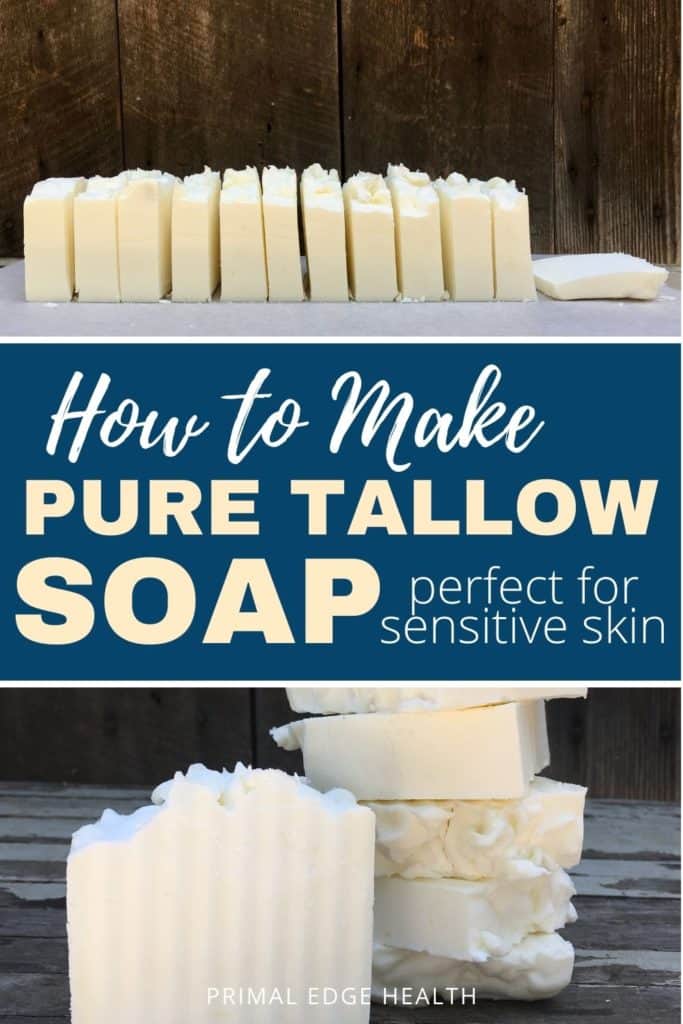
This post is written in part by Anna, owner and creator of Diamond Artisan Farm, who specializes in tallow-based cosmetics.
Table of Contents (click to view)
Natural Cold Processed Soap
Cold processed soap is, in simple terms, mixing oils with sodium hydroxide lye. This natural process causes a chemical reaction called saponification. Through the use of heat, fats and oils, as well as lipids, convert into soap.
Many so-called “natural” commercial soap labels claim to use 100% natural ingredients, however, the term can be misleading. Using terms such as “fragrant oils” or “natural dyes” make it hard to determine which, if any ingredient, causes skin irritation in those of us who are susceptible to seasonal & environmental allergies.
Commons ingredients found under the umbrella term “fragrances” are Acetaldehyde, Acetic aldehyde, Ethanal, and Ethyl aldehyde which are shown to disrupt body systems including the skin. (1, 2)
Unnatural commercial soaps use toxic ingredients that harm the skin’s microbiome and endocrine system and can destroy the skin’s micro-flora & disrupt our hormones. (3, 4) This, in turn, can cause immune system disturbances and a variety of skin conditions such as rashes, eczema, and dermatitis. (5, 6) These are, by far, the worst kinds of soaps for your health.
It’s important to consider what you put on your body, as well as inside of it.
Natural and homemade soaps work in synergy with your body by providing biological benefits that support your overall health. One of the major benefits to consider when choosing which soap to use is having direct control over your health. Making and using your own naturally derived soap gives you that control.
Why Use Beef Tallow In Soap?
Tallow is rendered animal fat. The most common source is from beef, but other animals like mutton and bison may be used too. Completely non-toxic, animal fat is known for retaining moisture in the skin. Tallow just might be one of the best ingredients for DIY skincare recipes.
The discovery of tallow soap dates back to 3000 B.C. by the ancient Sumerians. Its reputation is as solid as the fat it comes from. Tallow became widespread in Britain somewhere between the Middle Ages and the 17th century leading to a shortage and depleting the nation’s reserves. As a result tallow became a luxury item that was heavily taxed. (7) Presently, the soap is readily available at affordable prices. It’s now easy to adopt a luxurious skincare routine that invites this cleansing powerhouse into your home, whether by purchase or creating it yourself.
We know that skin moisture decreases with age and at a faster rate when the skin is exposed to toxic products. (8, 9) Tallow is safe for human skin and will nourish while cleansing at the same time. As a product of nose-to-tail consumption, there are many benefits of using such a renewable resource that goes beyond just skin health. Although, those are there too!
Tallow Soap Has Many Skin Health Benefits
Tallow makes a hardy long-lasting bar of soap that has a creamy lather and won’t dissolve quickly in water. It’s also extremely conditioning to the skin.
- 100% tallow soap doesn’t clog pores
- Tallow moisturizes without being greasy (also proven in this Beef Tallow Moisturizer Recipe)
- Contrary to what you might think, pure tallow soap leaves zero residues.
The best part is that it’s 100% natural!
So, what do you think? Is tallow soap good for skin?
I say YES!
Learn how to render tallow for soap making.
Then try all of my easy tallow skin care recipes!
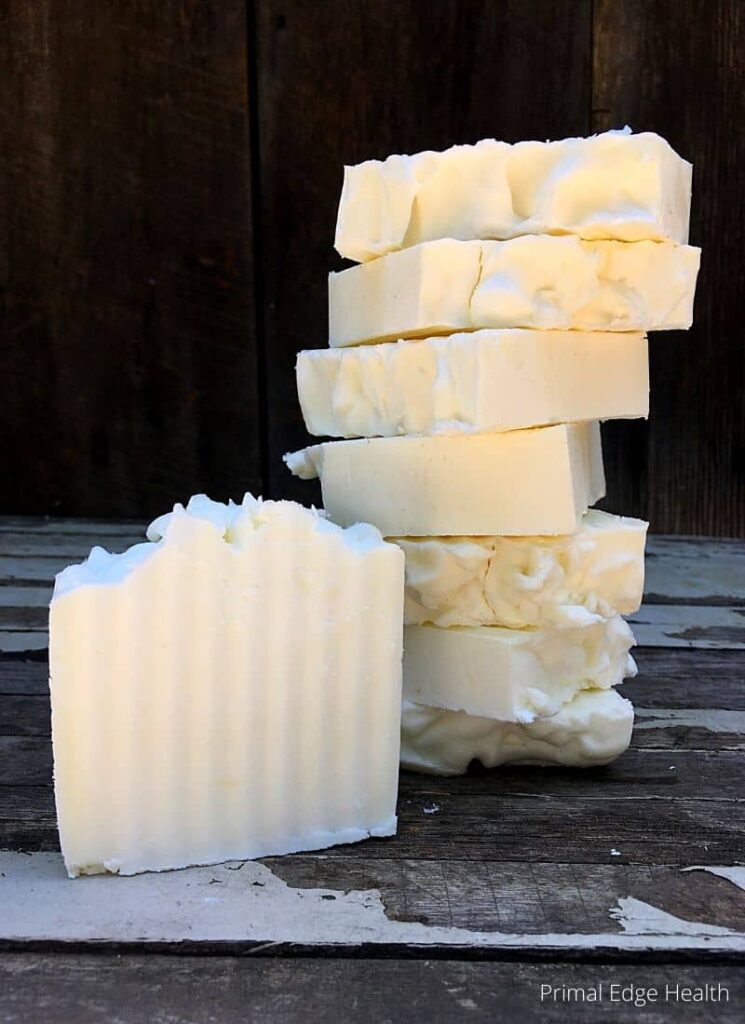
100 Percent Tallow Soap
If your desire is to feel well, look well, and just be well, consider that soap is something we all use daily. If you expose yourself to a product everyday you should choose a product in its purest form without any potentially irritating ingredients.
Making tallow soap is also very easy. Anyone can do it. Whether you’re a professional soap maker or a beginner; this beef tallow soap recipe is one of the easiest and fastest soaps you can make.
Before you start your recipe, be sure to read over the information in Cold Process Soap Making 101 for beginner’s tips and safety protocols.
Why Make a Pure Tallow Soap Recipe?
Soap making at home gives you complete control over the ingredients, quality, and the price per unit.
Those with sensitive skin can exclude fragrances and colorants that may cause irritation. From our experience with a carnivore diet, we learn that there are hidden plant toxins that may be causing more harm than good. Sometimes the only way to tell if you are being affected by them is to completely remove them. This practice is as true for diet as it is for topical cosmetics.
Choose organic grass-fed tallow from a local butcher or you render it yourself, and you know you are getting the best quality available. In short, by using 100% beef tallow in a recipe, you eliminate all extra ingredients and focus on just the bare bones essentials.
The reward that comes with homemade soap goes beyond physical and monetary gain. You connect yourself to a spiritual experience that is gratifying and indescribably blissful.
When making your own tallow soap recipe, you cut out the middleman and avoid retail pricing. Every penny you spend is an investment in your health and well-being. So wash up!
If you want to make tallow soap that has other fats in it also, I recommend this Rosemary Lime Tallow Soap Recipe. The combination of tallow, coconut oil, and olive oil is very nice for those who can tolerate those ingredients.
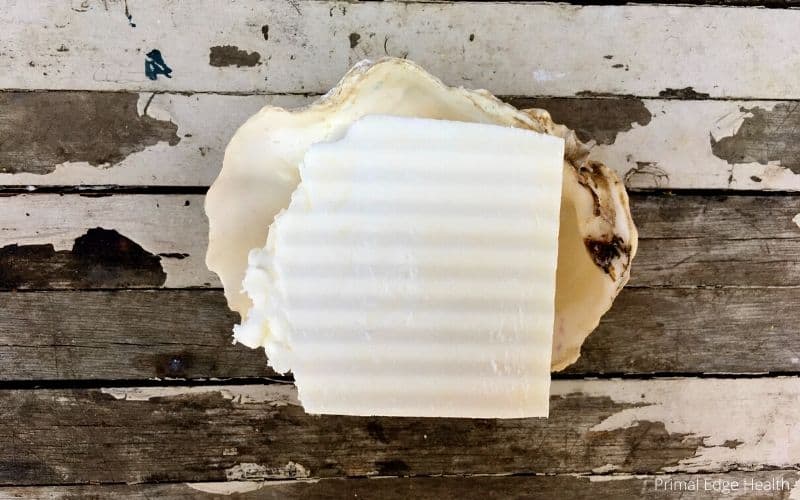
How To Make Tallow Soap
As long as you have a few basic tools, protective gear, a source of heat, and access to the outdoors, you can make this simple beef tallow soap.
Here is the most simple homemade soap recipe you can find – only 3 ingredients!
Grab all your tools and supplies, then meet me in the kitchen.
This recipe yields approximately 12 4-ounce bars.
It takes me approximately 1.5 to 2 hours to complete the project from start to finish, including clean up. Soap is always made ahead of time since there is a curing time of 3-6 weeks before it is usable. Keep that in mind as you proceed.
What You Need for Pure Tallow Soap
Stainless steel and silicone molds and tools are best because they tolerate heat well.
When mixing the lye solution, the temperature rises up to 190 degrees F within minutes.
This high temperature can cause tools and equipment to melt into the solution. Wood disintegrates, plastic melts, silver coated utensils crumble, and teflon or anodized coatings get stripped.
I recommend stainless steel and silicone during the mixing stages of soap making.
Molds do not need to have silicone inserts for the wooden molds because the soap batter is poured into them after the temperatures have dropped to a safe level.
However, take note that silicone molds are the easiest way to remove the soap when ready to cut.
Ingredients
- Tallow
- 100% sodium hydroxide lye
- Distilled Water
Protective Gear
- Long sleeves
- Kitchen gloves
- Face mask or eye goggles
Tools
- Double boiler (Create one by filling a saucepan with a few inches of water and inserting a bowl over.)
- Thermometer
- Scale (measuring ounces)
- Stainless steel or plastic bowl
- Electric hand mixer (or whisk)
- Soap mold
- Kitchen or bath towel (for insulation)
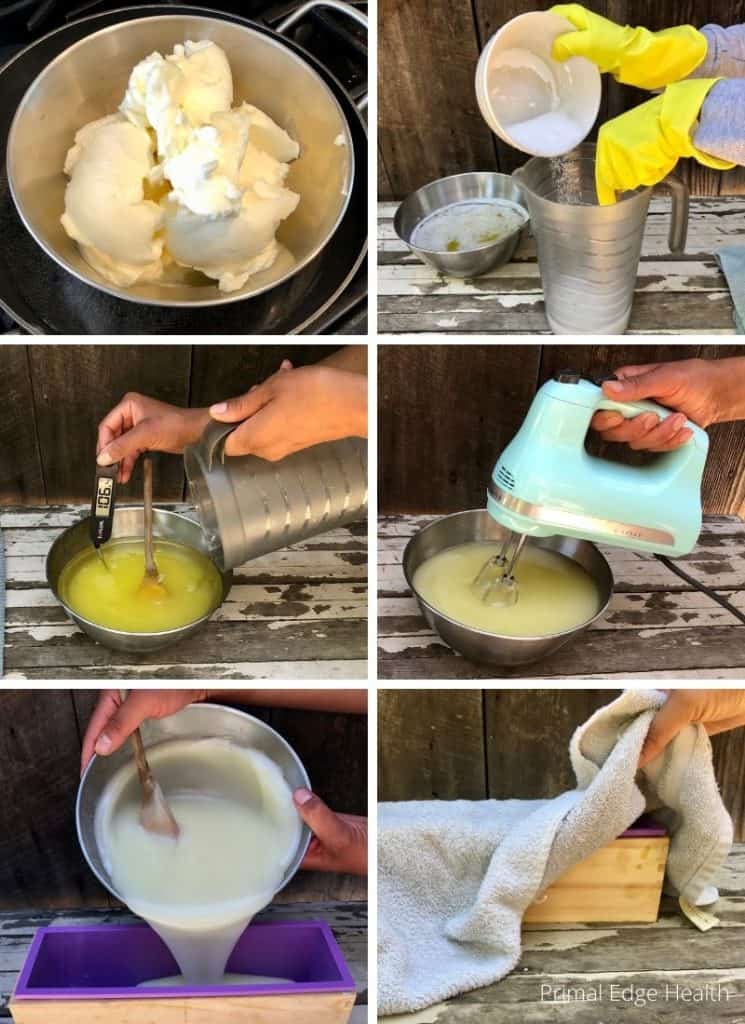
Directions for 3-Ingredient Beef Tallow Soap
Step 1: Prepare the ingredients
Melt the tallow in a double boiler over low heat until it reaches 140 degrees Fahrenheit.
While you’re waiting for the tallow to melt, head outside with the lye and water. While wearing protective gear, pour lye crystals into water while gently mixing until thoroughly combined.
The tallow melts quickly. Usually it turns liquid within 10 minutes over low heat.
Step 2: Combine ingredients
Wait until both mixtures fall between 100-110 degrees Fahrenheit.
Pour lye water into the melted tallow and blend with an electric blender or whisk by hand until you reach a light to medium trace.
If you ever want add essential oils, this is the time. Stir 1-ounce (28 g) by weight of essential oil.
Step 3: Pour and insulate the soap
Pour the liquid soap into a soap mold. Tap gently to remove any air bubbles. Cover with a towel to insulate for 24 hours in a ventilated area.
Step 4: Remove from mold and cut
Once totally firm, remove from the mold and cut into your desired thickness.
I typically cut them into 12 equal pieces, about 3/4″-1″ thick.
Step 5: Cure soap
Leave the soap to cure in an upright position for 3-6 weeks before using it.
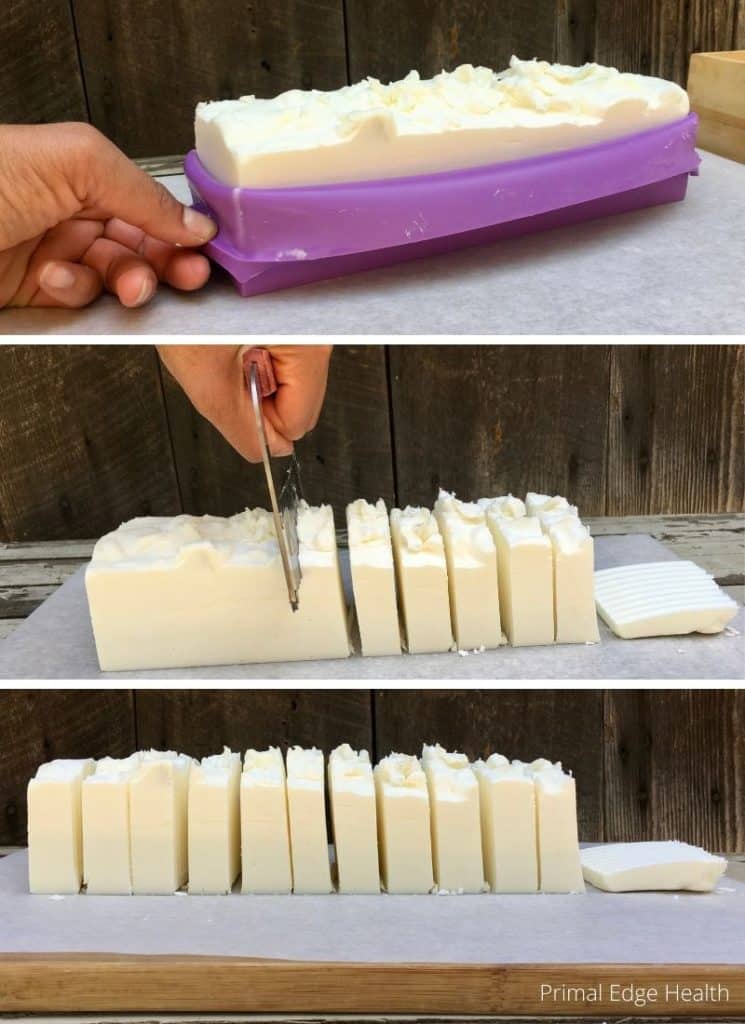
Where to Buy Tallow for Soap
Ready to go?
I know tallow isn’t a staple in everyone’s kitchen – yet. You might be wondering “Where can I buy tallow for soap making?”
Let me tell you.
Always start with your local butcher. If they don’t carry it in stock and can’t special order it for you, turn to a trusted online retailer.
I recommend buying tallow or suet (to make tallow at home) online from US Wellness. This 5-gallon bucket is a great deal for anyone feeling serious about using tallow regularly for cooking, tallow skin care and soap making. Of course, if you’re just getting into it, pick out the smaller option instead.
You will use the same tallow for soap making as you will for cooking. There are not different grades of tallow. This means, there is not a differential between cosmetic grade and food grade. Tallow is a multipurpose fat.
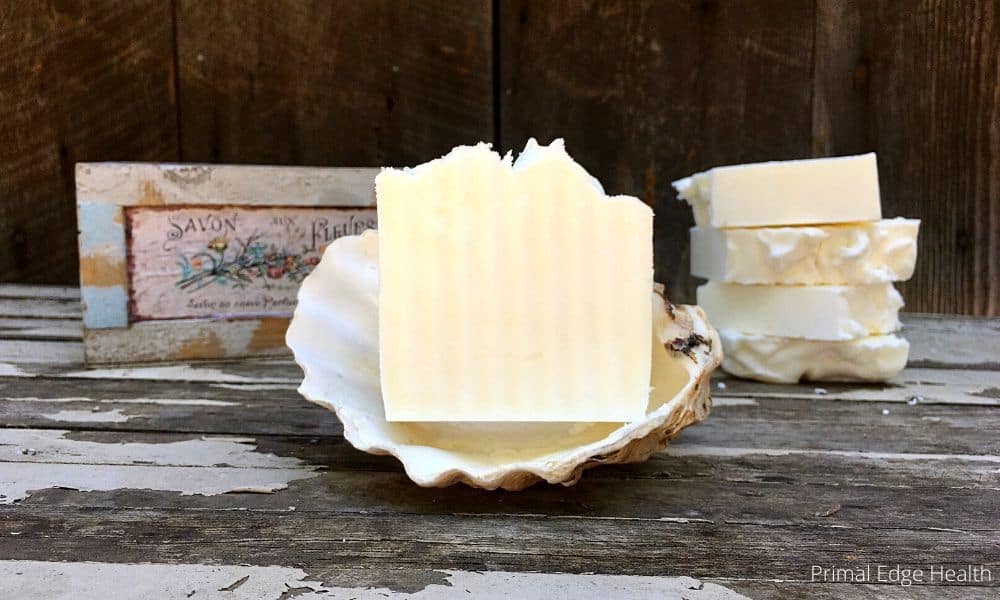
Tallow Soap for Sale
Are you interested in trying a 100% tallow soap, but not ready to make it yourself?
Maybe you’re so excited, you want to get your hands on some RIGHT NOW. Who wants to wait?
Hop over to Diamond Artisan Farm on ESTY and order from Anna herself! She offers international shipping to better serve those located outside of the United States.
Pick up a few bars of her pure tallow soap and know that your order will directly support her small family farm.
While you are there, check out all the other great soaps, hand sanitizers, and salves she offers!
If she’s ever sold out or closed for harvest, visit our friends at White Oak Pastures. They run a successful regenerative agriculture project and make their own in house Tallow Soap Bar comprised of grass-fed tallow, coconut oil, and olive oil.
FOLLOW PRIMAL EDGE HEALTH on INSTAGRAM, PINTEREST and FACEBOOK for more simple DIY beauty and personal care recipes!
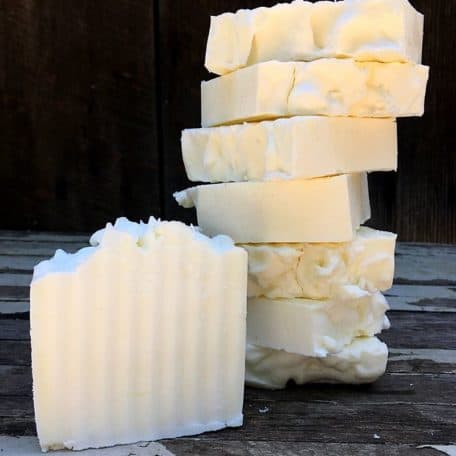
Pure Tallow Soap Recipe
Equipment
Ingredients
- 30 ounces Beef tallow
- 3.88 ounces Lye (100% Sodium Hydroxide)
- 11 ounces Distilled water
Instructions
- Melt the tallow in a double boiler over low heat until it reaches 140 °F.
- While tallow melts, put your protective gear on and pour lye crystals into the water. Gently mix, until thoroughly combined. (Do this step outside).
- Wait until both mixtures reach between 100-110 °F. Pour lye water into the melted tallow and whisk by hand or use an electric mixer until you reach a light-medium trace.
- Pour mixture into the soap mold and cover with a towel to insulate for 24 hours in a ventilated area.
- Remove from mold and cut into the desired thickness.
- Allow the soap to cure in an upright position for 3-6 weeks to harden.
Notes
- Lavender and Chamomile are the gentlest e.o’s on the skin and body system. They are safe for all ages and used to remedy skin irritations, anxiety relief, wound healing, digestive upset, & relaxation.
Thank you again to Anna from Diamond Artisan Farm for sharing your knowledge with us!
This is a thoughtful gift for friends and family! If you want more ideas, check out Bath and Body Recipes that Make Great Homemade Gifts.

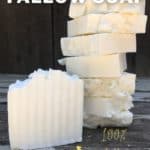
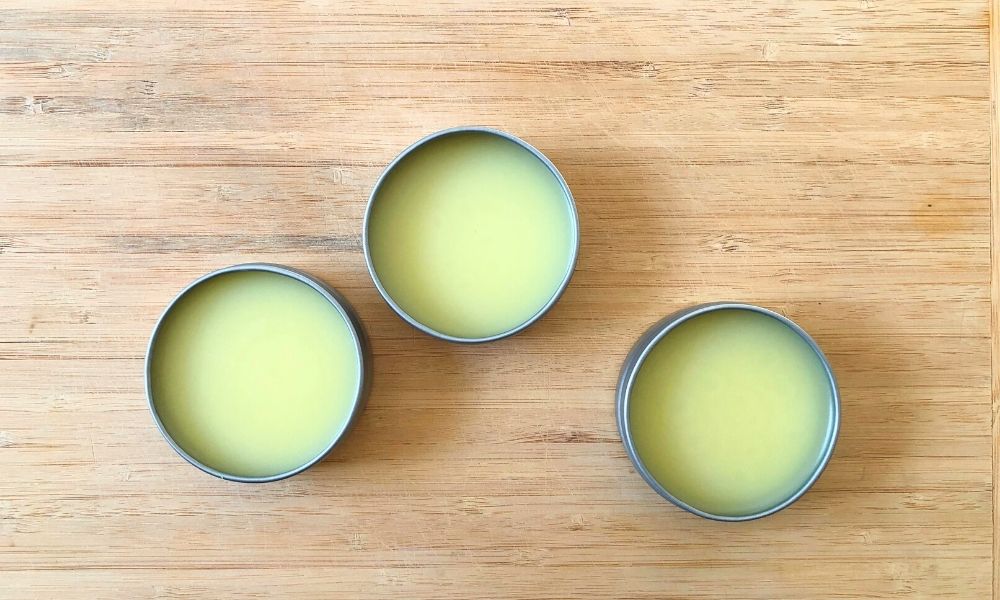
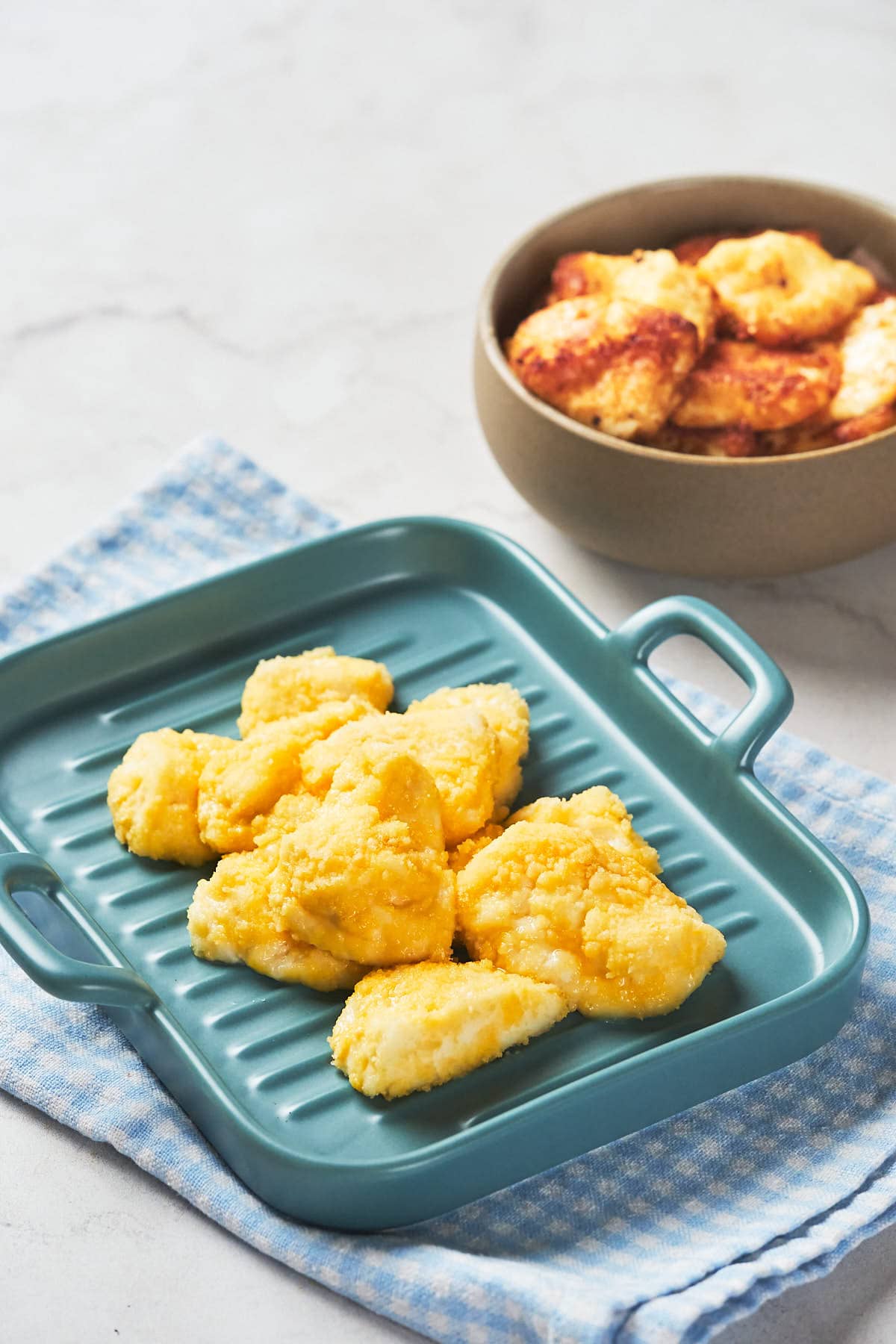
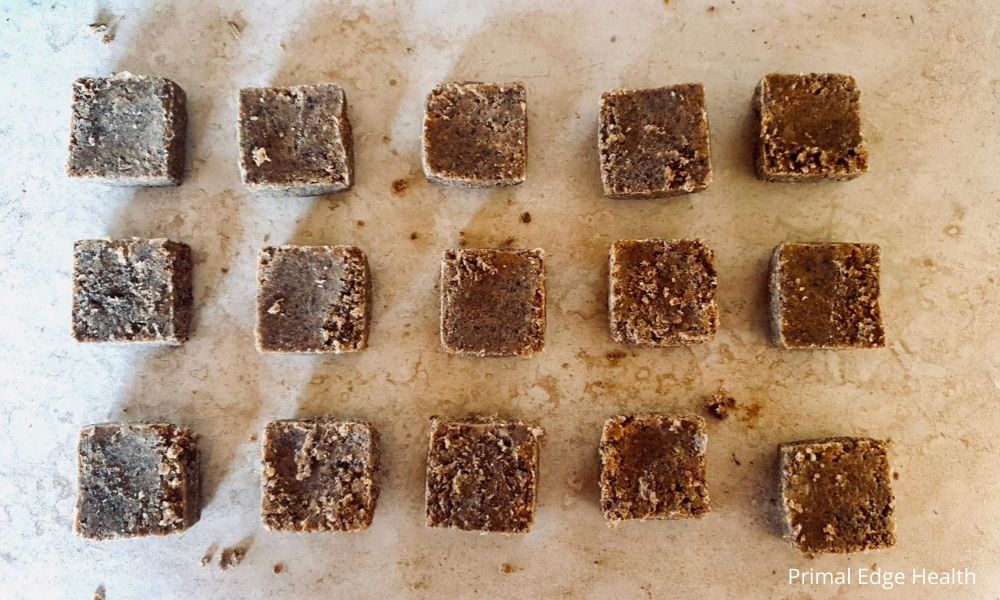
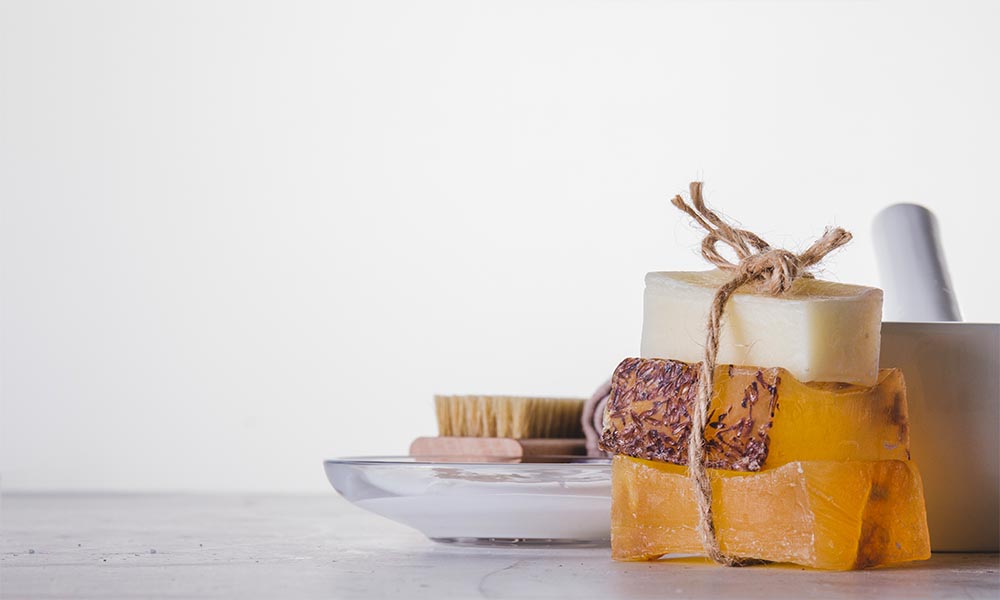
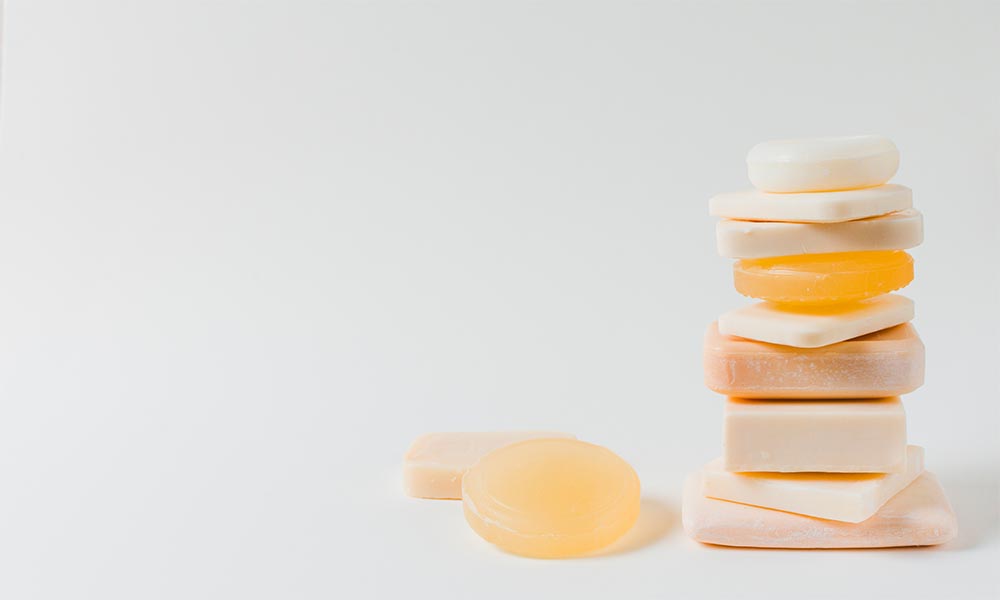
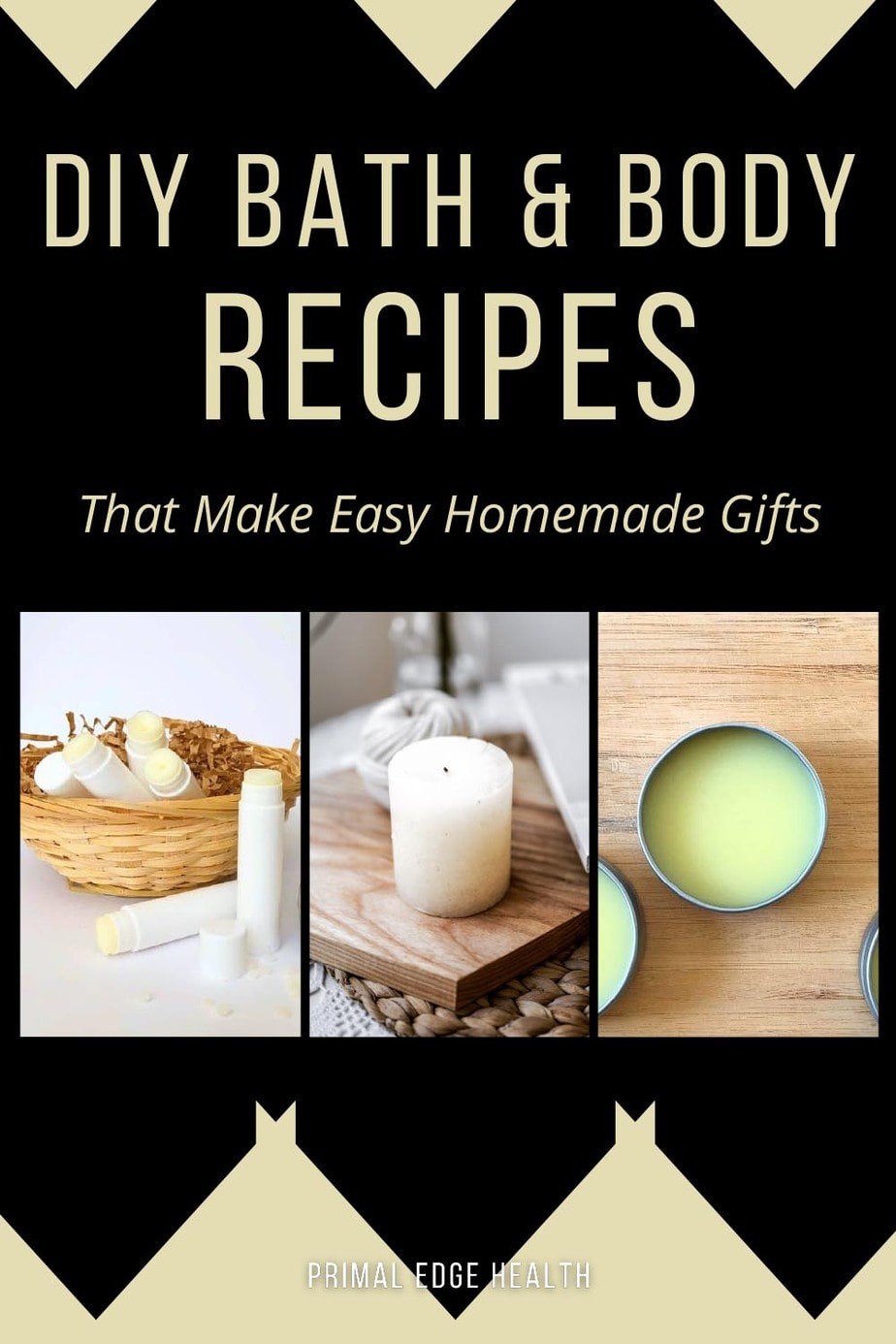
Hi! Thank you for the recipe! I would like to ask if you can use any milk instead of distilled water. Would that work? would the amount of milk be the same as the amount of distilled water?
Hi Sarah, that’s a great question! I’d love to know the answer too and suggest you reach out to the creator of this recipe. She is my friend Anna, from Diamond Artisan Farm. Her links are in the post above too.
If you want to use milk of any kind, freeze it and use 100% as water replacement. Put ice in a bowl and then your lye container on top of the ice. Very slowly add your lye to the milk stirring constantly so that the lye doesn’t burn the milk. It can turn a light orange sometimes but it won’t affect the bar.
Hi, Holly. Thanks for dropping this awesome tip! Can’t wait to try this out and see the results for myself.
Can we use it as a shampoo bar?
I think it works great for that, but I’m sure it depends on your hair type. I wouldn’t use it more than once a week probably 🙂
Hi – I made this soap yesterday and just cut it. It’s crumbly and kind of chalky. Is that too much lye? Why would that happen? Can I save it by rebatching?
Hi Brittany, unfortunately, I have not experienced the same problem. I’m going to assume the soap if fixable. However, this specific question is best for Anna, the author of the recipe and post. I suggest writing to her via the contact form on her ETSY shop page. Shop links are located in the post above. Hope this helps you go in the right direction!
I made this yesterday but something went wrong. I used tallow that I rendered from grass fed beef. The tallow was 107° and the lye water was 104°. I blended it for about a minute then let it rest. It was like mashed potatoes when I started to blend it! I added my FO mixed it and plopped it in the mold hoping for the best. This morning, there was a puddle of oil on top, the soap was hard but sliceable. There were tiny holes where lumps of hardened soap didn’t settle together in the mold. It looks usable but I’m wondering if rebatching will fix it or make it worse? I am determined to make tallow soap and this is all part of my learning process. I love this site and I hope you can offer some advice.
You’re so close to getting this Mary Jo! It sounds like the materials were too cool when you blened them, next time combine at a higher temperature. When I make my tallow dish soap, I mix at 120*F, so I know that works 🙂 As to rebatching, I assume you mean melting and then repouring… to be honest I’m not familiar with that process and don’t know how it will turn out. I suggest you reach out to Anna with your questions and see what she says. You can message her at her ETSY store which is linked in the beginning of this post or Instagram @diamondartisanfarm. Keep trying! You’ll get it!